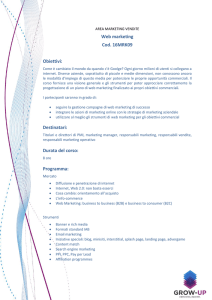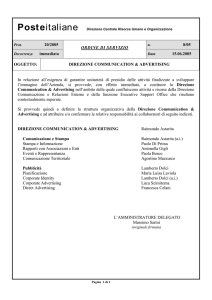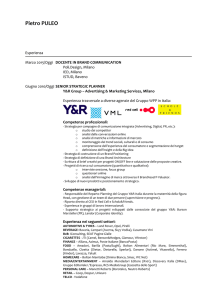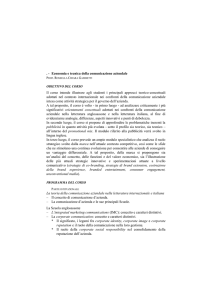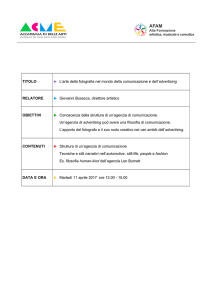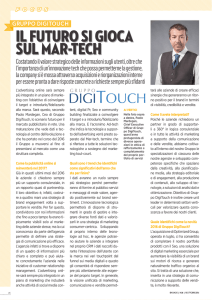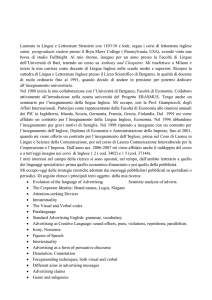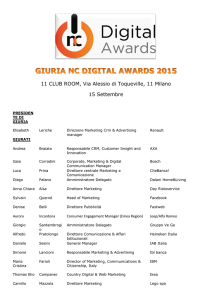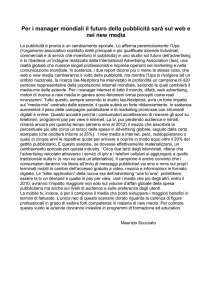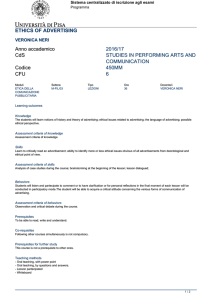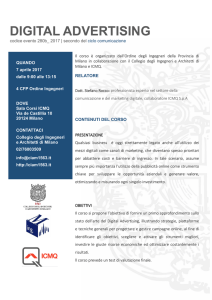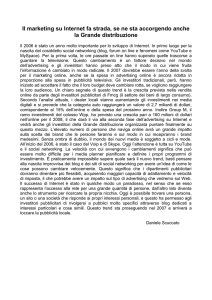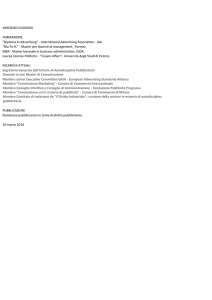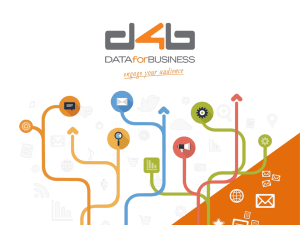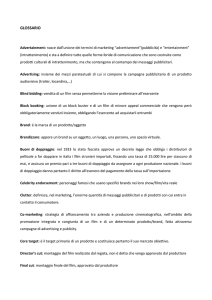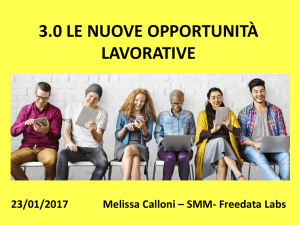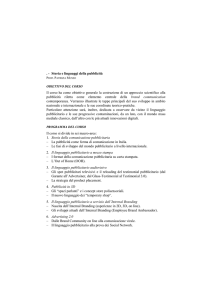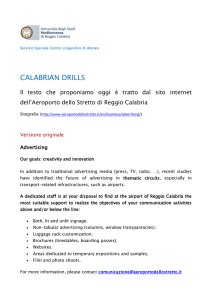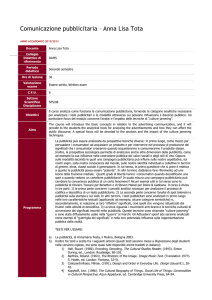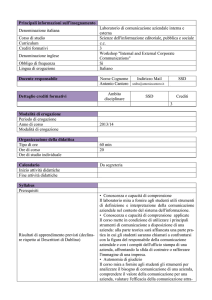History and Language of Advertising
annuncio pubblicitario
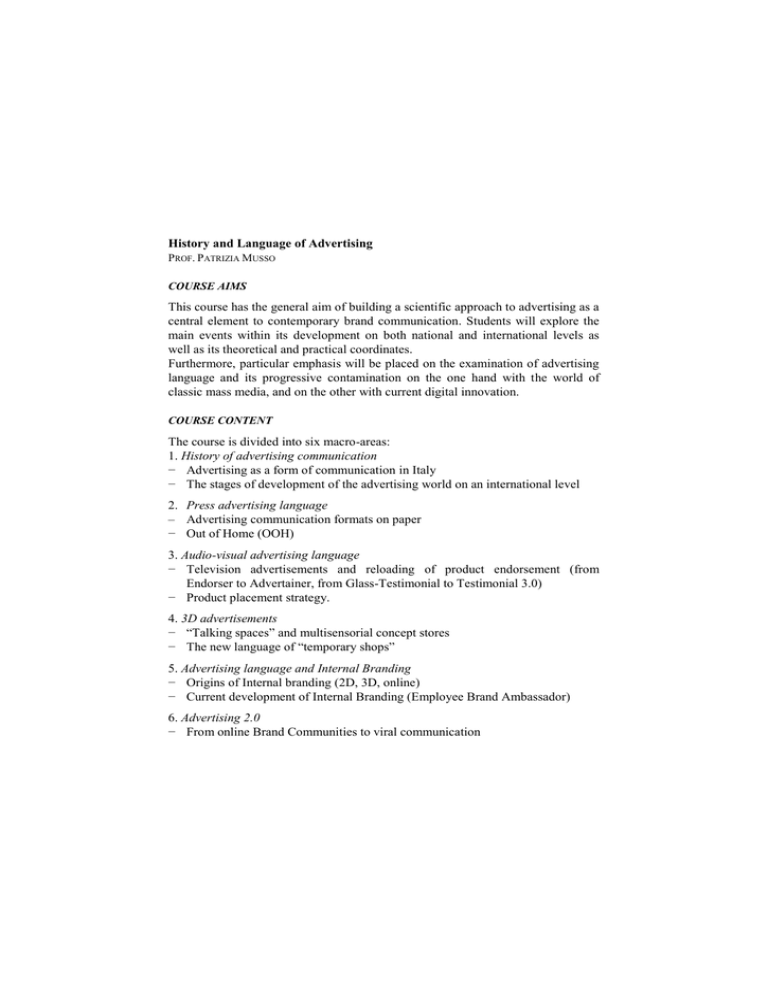
History and Language of Advertising PROF. PATRIZIA MUSSO COURSE AIMS This course has the general aim of building a scientific approach to advertising as a central element to contemporary brand communication. Students will explore the main events within its development on both national and international levels as well as its theoretical and practical coordinates. Furthermore, particular emphasis will be placed on the examination of advertising language and its progressive contamination on the one hand with the world of classic mass media, and on the other with current digital innovation. COURSE CONTENT The course is divided into six macro-areas: 1. History of advertising communication − Advertising as a form of communication in Italy − The stages of development of the advertising world on an international level 2. Press advertising language – Advertising communication formats on paper − Out of Home (OOH) 3. Audio-visual advertising language − Television advertisements and reloading of product endorsement (from Endorser to Advertainer, from Glass-Testimonial to Testimonial 3.0) − Product placement strategy. 4. 3D advertisements − “Talking spaces” and multisensorial concept stores − The new language of “temporary shops” 5. Advertising language and Internal Branding − Origins of Internal branding (2D, 3D, online) − Current development of Internal Branding (Employee Brand Ambassador) 6. Advertising 2.0 − From online Brand Communities to viral communication READING LIST V. CODELUPPI, Persuasi e felici. Come interpretare i messaggi della pubblicità, Carocci, Roma, 2011. P. MUSSO, I nuovi territori della marca. Percorsi, discorsi, azioni, F. Angeli, Milano, 2005. P. MUSSO, Internal branding. Strategie di marca per la cultura d’impresa, F. Angeli, Milano, 2007. P. MUSSO, Brand reloading. Nuove strategie per comunicare, rappresentare e raccontare la marca, FrancoAngeli, Milano, 2011. M. TUNGATE, Storia della pubblicità, FrancoAngeli, Milano, 2010. Further references and information regarding the reading material in preparation for the examination will be provided during the course. TEACHING METHOD Active teaching including tutor-led exercises. Case analysis and accounts from corporate representatives. ASSESSMENT METHOD Oral examination on completion of the course. NOTES Further information can be found on the lecturer's webpage at http://docenti.unicatt.it/web/searchByName.do?language=ENG or on the Faculty notice board.
